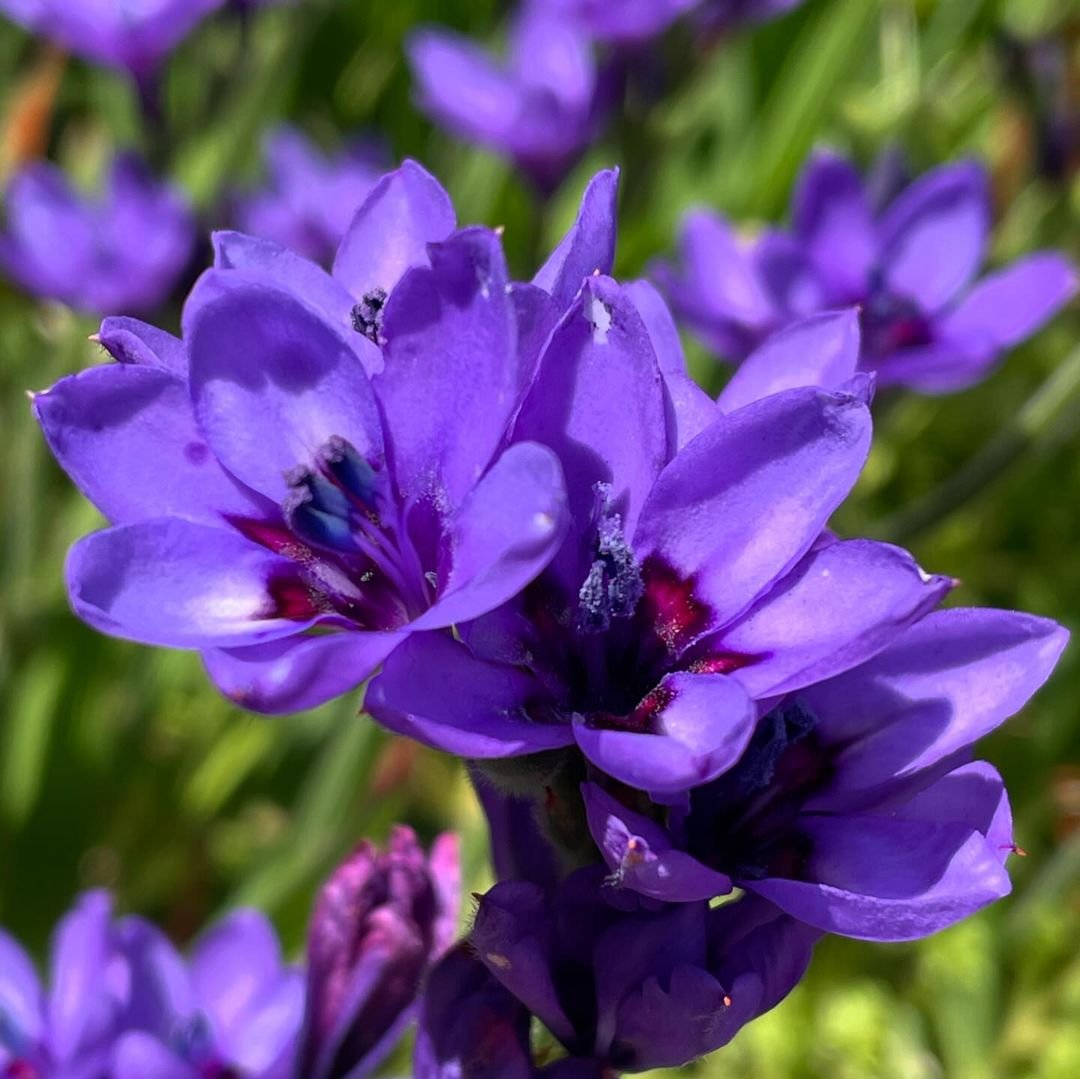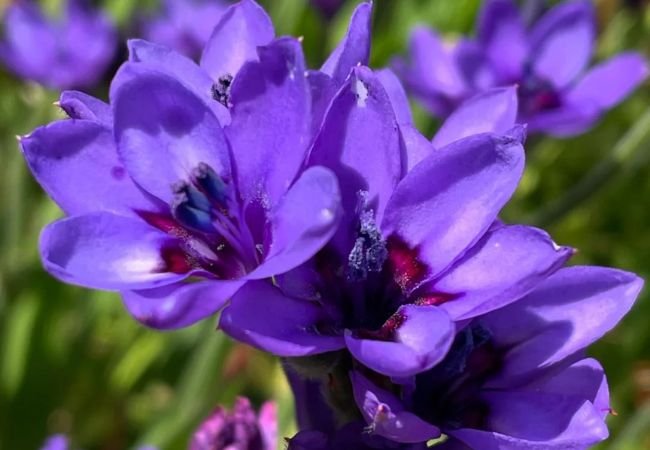Discover how to grow and care for Baboon Flowers (Babiana) with expert tips from Ashley Scott. Learn about their benefits, symbolism, and bird-pollinated traits!
Hi, I’m Ashley Scott, a gardener with over 10 years of experience. Today, I’m excited to share my passion for the Baboon Flower (Babiana stricta), a vibrant, low-maintenance bulb that’s perfect for adding color to your garden. Whether you’re here for baboon flower pictures, care tips, or symbolic meanings, this guide has you covered!
What is a Baboon Flower?

The Baboon Flower, also known as Babiana, gets its quirky name from the fact that baboons in South Africa dig up and eat its corms (bulb-like structures). In English, it’s simply called “Baboon Flower” or “Babiana.” These striking blooms come in shades of purple, blue, pink, and white, with sword-shaped leaves and a delicate fragrance.
Key identifiers:
- Flower: Cup-shaped, 6 petals, resembling buttercup flowers.
- Height: 6–12 inches tall.
- Bloom time: Late spring to early summer.
Fun fact: The Baboon plant is part of the Iridaceae family, which includes irises and crocuses!
How to Grow Baboon Flowers
Ideal Growing Conditions
From my experience, Baboon Flowers thrive in USDA zones 8–10. They prefer:
- Sunlight: Full sun (6+ hours daily).
- Soil: Well-draining, sandy soil (like their native South African habitat).
- Water: Moderate; avoid soggy roots.
Pro tip: If you’re in a colder zone, grow them in containers and move indoors during frost.
Planting Baboon Flower Bulbs
Baboon flower bulbs (technically corms) should be planted in fall for spring blooms:
- Depth: 3–4 inches deep.
- Spacing: 3–4 inches apart.
- Soil prep: Mix compost or sand for drainage.
I once lost a batch to root rot—don’t skip the drainage step!
Caring for Baboon Flowers
Watering & Fertilizing
- Water: Keep soil slightly moist during growth. Reduce after blooming.
- Fertilizer: Use a balanced 10-10-10 formula in early spring.
Pest Control
These plants are deer-resistant but watch for aphids. A mild soap spray works wonders.
Post-Bloom Care
After flowering, let foliage die back naturally. Dig up baboon flower bulbs every 3–4 years to divide and replant.
Bird-Pollinated Flowers: What Makes Baboon Flowers Unique
Bird-pollinated flowers like Babiana have specific traits:
- Bright colors (red, orange, purple) to attract birds.
- Sturdy stems to support perching.
- Nectar-rich blooms for sunbirds and hummingbirds.
This adaptation ensures cross-pollination, boosting biodiversity in your garden!
Baboon Flower Benefits & Symbolism
Cultural Meanings
In folklore, what do baboons symbolize? They often represent curiosity and resourcefulness—traits mirrored in the hardy Baboon Flower. Some cultures associate these blooms with resilience and adaptability.
Practical Uses
- Garden design: Perfect for borders, rock gardens, or containers.
- Cut flowers: Their vibrant hues brighten indoor arrangements.
FAQs About Baboon Flowers
1. What is the Baboon Flower called in English?
It’s commonly called Baboon Flower or Babiana. The term “Baboon tree” is a misnomer—it’s not a tree!
2. Where can I buy Baboon flower seeds?
Check reputable nurseries or online stores. For quality baboon flower bulbs, I recommend USA Garden Hub’s bulb guide.
3. Are Baboon Flowers toxic?
No, but their corms are a baboon delicacy—not humans!
My Favorite Baboon Flower Varieties
- Babiana stricta ‘Blue Star’: Azure blooms with white centers.
- Babiana rubrocyanea: Striking red-and-blue petals.
For more inspiration, explore USA Garden Hub’s rare flower list.
Final Thoughts
Growing Baboon Flowers has been a joy in my gardening journey. Their low-maintenance nature and vivid colors make them ideal for beginners and experts alike. Ready to try? Grab some baboon flower seeds and let your garden roar with life!
Liked this guide? Share your baboon flower pictures with me on USA Garden Hub’s facebook page! 🌸


I don’t think the title of your article matches the content lol. Just kidding, mainly because I had some doubts after reading the article.